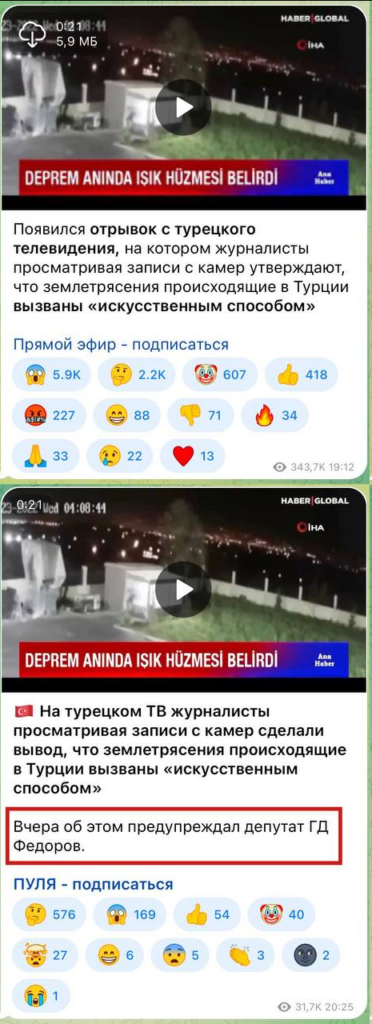Physics of the non-Russian world

The Kremlin’s propaganda machine is now aimed at proving the artificial origin of the devastating earthquake in Turkey and Syria.
They say, the flashes of light in the sky just before the earthquake are proof that someone bombed Turkey.
You may have laughed at reports from REN-TV before, but now REN-TV is propagandistic. That TV channel started all kinds of nonsense and observed the population’s response. Now they’ve learned and they’re working full time.
Such flashes are called “lights of earthquakes”, or EQL for short. Quite a natural phenomenon and has been observed by humans since the very beginning of mankind.
The first scientific work on these lights was written in 1851 in Ireland by Robert Mullett, who listed all EQL observations from the 17th century BC to 1842.
EQLs in the sky can be seen both a few hours before or during an earthquake and after it (but after they happen less often than before or during).
They occur most often along rift zones (deep faults) and grabens (a part of the earth’s crust that has been swept into a steep vertical cliff).
These lights may be as small as fireflies, but they may flicker, covering the whole sky with lights. It all depends on the geological nature of the terrain.
The basic theory of their origin states that this light is caused by strong mechanical stresses in the Earth’s crust and their change at the moment of propagation of seismic waves, which generates an electric current, the discharges of which are seen as “earthquake lights”.
Sometimes the appearance of EQL signaled people of impending disaster, and they had time to evacuate to safety.
Rushists, on the other hand, have absolutely nothing to hide their Nazi propaganda. Both high-ranking rushists and ordinary people: they are all in the same team and strive for the same goal: the complete humanization not only of themselves, but of all those among whom their Nazi ideas can be planted.


Leave a Reply